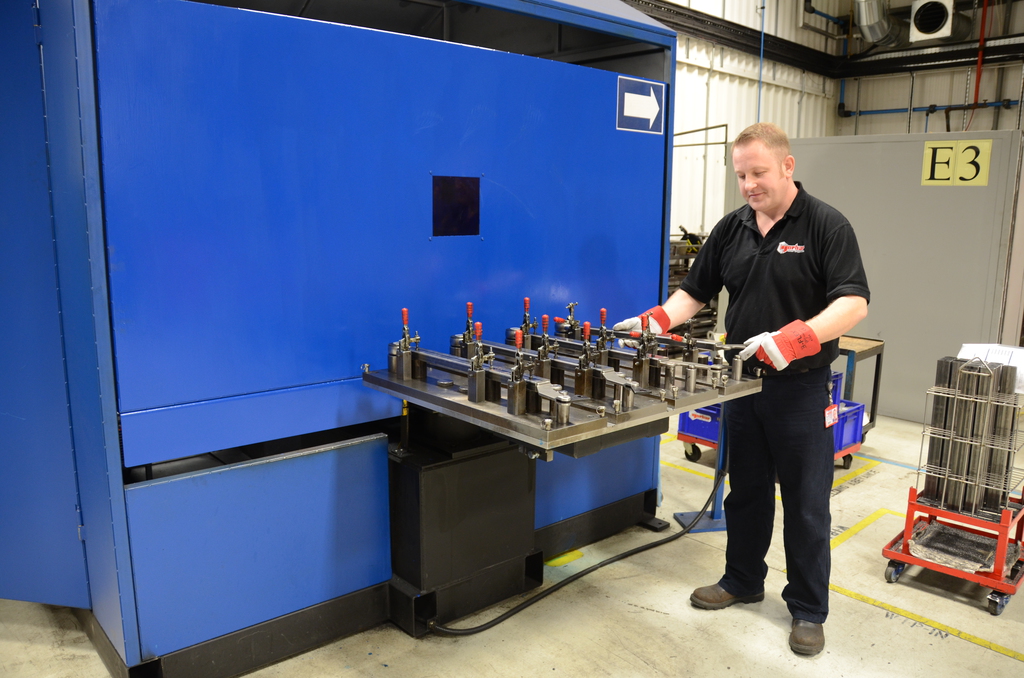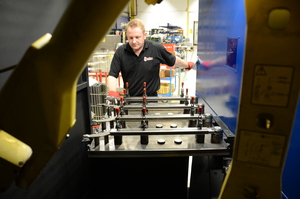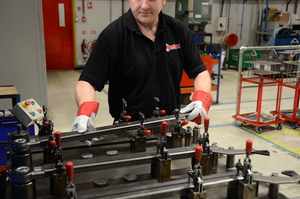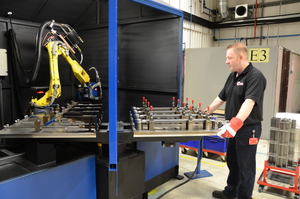

|
Edward Lowton
Editor |


|
| Home> | Production Engineering | >Welding | >Increased capacity and space savings |
Increased capacity and space savings
24 January 2014
A new robotic welding cell engineered by Cyber-weld for Norbar Torque Tools is providing increased capacity, quality improvements and is taking up less space; the new system is based around a FANUC ARC Mate robot.

A previous welding cell with limited capabilities had come to the end of its effective supportable days. Norbar's production engineering team was specific in that they needed to speed-up the welding process for its Industrial Torque Wrench range.
Cyber-weld, a strategic partner of FANUC for welding applications was selected to engineer and supply the replacement system. Designing what is essentially a 'plug and weld' robot cell comprising a FANUC ARC Mate six axes welding robot, an integrated MIG welding power source, turntable and fume extraction, the complete system was delivered as one complete product and fork-lifted into position. Requiring only power and gas supplies, the system was available for pre-production trials and commissioning within hours of its delivery.
John Hooley, production engineer, Norbar, said: "Cyber-welds in-depth knowledge of both the welding process and robotics made the process very straightforward; we were able to carry out trials before delivery and quickly realised the increased flexibility we had with the efficient integration of the welding package into the FANUC robot control system.
"The reduction of spatter has virtually eliminated the need for linishing after welding. Added to this the high welding-speed of the FANUC and being able to multi load components while welding continues, the Cyber-weld system has helped us to reduce a typical batch weld time from 4.5 to 2.5 hours."
Fixtures were designed and manufactured in-house by Norbar and quick-release post mounts with pin locking ensures fast tool changeovers. The weld cell has been designed to allow ease of access to all areas without compromising available space. Effectively the cell's walls and ceiling form a box or room that neatly self-contains all equipment. The turn-table is manually rotated in front of the robot to present parts for welding and to unload welded components.
"The success of the system, its transition and minimal disruption to production is down to the preparation we carried out with Cyber-weld. It became clear early on in our discussions that the Cyber-weld team are passionate about robotics and welding with an in-depth knowledge to carry it all through." Hooley concluded.
- Improved cycle times benefit bike part manufacturer
- Four-axis palletising robot
- Time to bridge the skills gap
- High-speed, high-precision processing fibre lasers
- Compact robot controller
- Robotics and machining education cell
- Latest vertical machining centres
- Injecting innovation into manufacturing
- Robotic machining cell
- Simultaneous horizontal multi-axis machine




















